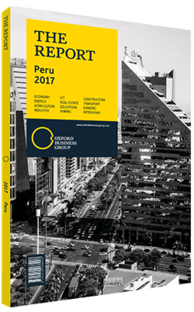Carlos Gálvez Pinillos, Vice-President and CFO, Minas Buenaventura: Interview

Interview: Carlos Gálvez Pinillos
How could the Ministry of Energy and Mining’s upcoming development projects be impacted?
CARLOS GÁLVEZ PINILLOS: The first factor is the length of time it takes to obtain licences in Peru, as the waiting period takes an average of four to six years. Reducing these times will certainly determine the ability to meet the government’s goal of attracting $60bn in mining investments by 2021. Four fundamental pillars are needed for the success of any project: it must be technically feasible, financially viable, environmentally friendly and socially acceptable. The major challenges to financial viability are the low price of commodities and increasingly strict environmental regulations. Social acceptance, however, is one of the most difficult obstacles. A lack of government interaction with communities where projects are developed has enabled a lack of understanding of the mining sector and the benefits it can bring for local communities.
To what extent will the challenges experienced in the Tía María, Conga and Quellaveco projects impact the mining sector and the economy?
GÁLVEZ: Although mining is not regarded as a major direct employer – providing direct employment to around 200,000 Peruvians – the sector is an engine of growth for many other industries and indirectly creates thousands of jobs. The challenges that were experienced in Tía María, Conga and Quellaveco, as well as those experienced by many other projects directly and indirectly, destroyed thousands of jobs. In the case of Cajamarca, where the Conga project is located, the region has become the only one in the country to enter a recession in the last five years.
How can the gold sector return to prior production levels in the medium to long term?
GÁLVEZ: The key to increasing gold production levels is to multiply exploration efforts, which will determine the level of increase in the country’s reserves. Further investments in exploration, however, are highly tied to market circumstances. Nevertheless, investors must understand that gold mining cost is cyclical, considering that the higher the gold price, the lower the grade of ore produced, and that costs will decrease as commodity prices continue to bounce back after hitting their lowest levels in recent years.
What can the government and private sector do to minimise mining-related conflicts?
GÁLVEZ: Conflicts have often been led by individuals and organisations with hidden agendas, using environmental pretexts to lobby in favour of halting a great number of large projects, yet failing to show the same level of environmental commitment when it comes to illegal mining. Therefore, the first step to minimising the number of conflicts and their negative impact is acknowledging the real motivations of those who have spurred these conflicts. It is important for both the new government and the private sector to increase their efforts to work together. It is imperative to adequately communicate the real impact and benefits associated with mining projects, and to emphasise the high environmental standards and requirements that guarantee sustainability in mining areas. It is essential that the government assume a role of leadership, envision a path for the country and the private sector to follow and posses the ability to convince all stakeholders to fulfil that vision by working with each other.
What are alternatives to the Ministry of Environment’s decision to request mining companies pay 0.15% of their sales as regulatory contributions?
GÁLVEZ: Regulatory contributions should not be charged based on the company’s overall sales, but rather on the cost for the state to carry out an inspection of the company’s operations. Furthermore, the amount paid by the company should be dependent on the number of yearly inspections on the company.
You have reached the limit of premium articles you can view for free.
Choose from the options below to purchase print or digital editions of our Reports. You can also purchase a website subscription giving you unlimited access to all of our Reports online for 12 months.
If you have already purchased this Report or have a website subscription, please login to continue.

